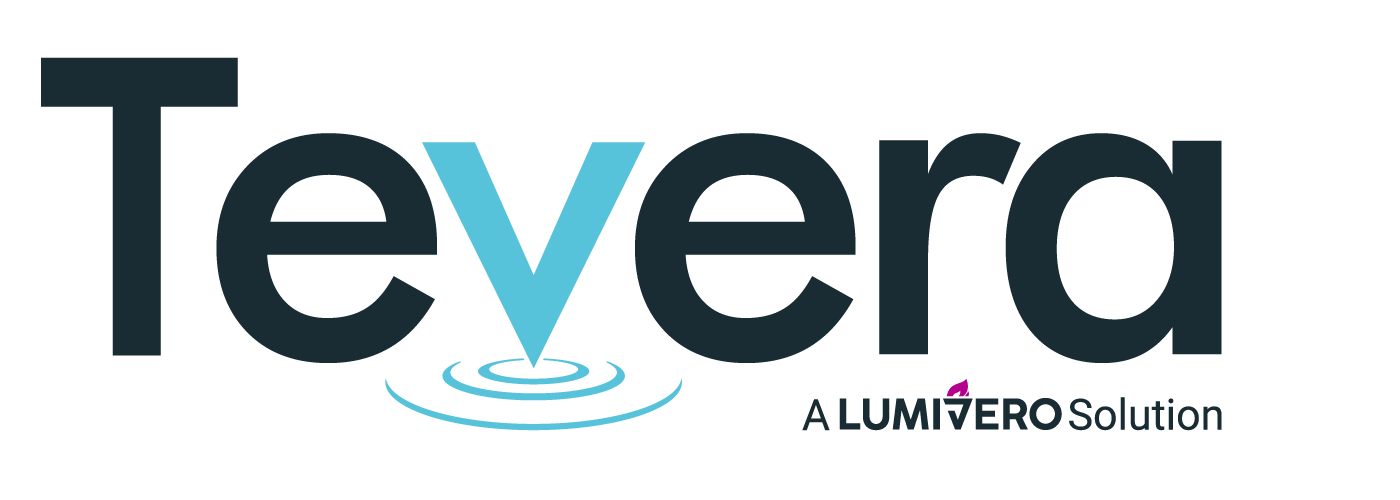Useful Tips and Actionable Steps to Finding the Right Employee for Your Organization
Hiring the right candidate is crucial for any business but especially for behavioral health agencies. Because these are the people who work directly with your clients they’re crucial to maintaining your agency’s reputation.
When you need to add a teammate, the first step you can take to ensure your next hire is a qualified candidate who will be a good fit is to focus on the job description or your candidate profile.
Most of the time, job descriptions are created from stock profiles found online or on job boards. While helpful, don’t rely on these templates. Be prepared to heavily edit as you need to communicate more than simply the basic skills required for the job. An incomplete job description or vague one will attract “no-match” applications and could actually discourage quality hires.
So, how can you build a job profile that is a perfect match for your agency while also catering to job seekers’ needs? Continue reading to find out.
1. The Job Description – Setting Expectations at First Sight
Be specific as possible in your job descriptions, in every section:
Mission Alignment
It’s your opportunity to set expectations and explain your core company goals and values. This will ensure you find a candidate whose personal mission matches yours. Be sure to put your mission statement and any core values your agency has down on that job description.
Job Duties
Job-seekers find it most helpful when specific duties are explicitly outlined. Give job-seekers an idea of…
- Their daily schedule
- What they can expect from you as the employer
- How their success will be measured
- Examples of projects
- And general team expectations
By giving a detailed description of what working at your company is like, you have the perfect opportunity to allow applicants who aren’t a fit to self-select out.
This frees your hiring team up to only receive applications from those candidates who are better suited to your unique work environment.
Specialties
Make sure also to highlight specialties that make your agency stand out from others in the field. For example, you’ll want your applicants to be able to answer the following questions.
- Does your organization allow the therapist to work with the population the therapist wants to work with?
- Is there room for growth and research?
- What can they expect to learn or gain from working with your agency?
- Why should they consider your company over another?
2. Values Alignment
Yes, this is so important that we’re highlighting it again.
Mission statements and the company’s story do not always get the attention they need. Storytelling goes a long way in demonstrating a company’s core values, its mission, and the reason behind why they exist. When told correctly, a company becomes more human and, therefore, accessible.
Individuals on the job-hunt don’t only look at the job profile, requirements, and duties. They also research the business, its leaders, and its values and mission. Job seekers overwhelmingly cite an employer’s mission and values as key criteria: 73% of candidates say they wouldn’t apply to a company whose values didn’t match theirs.
This is another opportunity to tailor candidate profiles to fit your company better. Having employees whose values align well with yours can make for a good match and help your company reach its goals faster. Don’t be afraid to make it clear what you stand for as a business. Include your mission statement and any core values you have on the job posting.
3. Flexibility – Demonstrate Work/Life Balance
People don’t just want flexibility; they need it. And with businesses shifting to remote working due to the pandemic, we know that flexibility and maintaining a healthy work/life balance is possible. And this is especially true in the case of working parents who need the flexibility to do their jobs well and take care of their families efficiently.
Even pre-pandemic reports have “84% of working parents” prioritizing flexibility and work-life balance over other work criteria. 2020 exacerbated existing demands on working parents and non-parents alike. More and more businesses are using remote working options as a way of drawing high-quality talent. Expect job-seekers to continue to demand flexibility, particularly when there are more open positions than job-seekers.
Be sure to highlight leave policies, benefits, and other perks you offer. Don’t shy away from outlining your must-haves too. If they have to be in the office every day at 6 AM, make sure the applicant knows that. And if there is an opportunity to discuss remote working options in the future — for example, once a month work-from-home policy after completing one year of working — let them know that as well.
4. Internal Culture – The Team Dynamics
Everyone wants to like the place where they work. We all want to enjoy our colleagues, even if we never become more than acquaintances who share the same coffee routine. The stats back it up too. On Glassdoor, 93% of employees write about “company culture” in their reviews.
Of course, defining a company’s internal culture can be challenging to pinpoint precisely, especially in a job description. But by paying attention to your word choice, you can show the applicant whether your workplace leans more towards slacks-and-ties or casual-Friday-every-day. No matter how you define your work culture, it’s worth noting that it’s important to job seekers.
At the same time, make sure not to oversell your company either. Don’t promise job-seekers a wonderful experience if that is not the reality. This may also mean taking a hard look at your company’s culture and finding ways to make it more employee-friendly. After all, happy employees will be more productive and invested in helping your company reach its goals. Keeping employees is always more cost-effective than having a high turnover rate.
Putting it All Together: Building the Candidate Profile
When creating a job profile to fit your company’s needs, be detailed and specific. Offer as much information as you can about what the hired employee will be expected to do. Don’t be afraid to put some “intangibles” like “personality fit” in there too.
A good place to start is by looking at job descriptions for positions like the one you are putting out. Treat these descriptions as templates that include the basics. Then, flesh out the description by adding specifics, specialties, and more. Job-seekers use keywords and phrases in their resumes to highlight their experience and industry knowledge. Similarly, use the words you want to make sure people put on their resumes.
When it comes to job postings, you do get back what you give. It is worth taking the time to craft job descriptions that outline the exact responsibilities and qualifications needed for the job. Make it easier for qualified individuals to find your agency so that together you can fulfill your agency’s goals and purpose.
Discover what job-seekers are looking for today. Read our interview with an HR specialist-turned counselor for a behind-the-scenes look.
SOLUTIONS
RELATED POSTS
PRODUCT OVERVIEW
See how Tevera can elevate your program.
Useful Tips and Actionable Steps to Finding the Right Employee for Your Organization
Hiring the right candidate is crucial for any business but especially for behavioral health agencies. Because these are the people who work directly with your clients they’re crucial to maintaining your agency’s reputation.
When you need to add a teammate, the first step you can take to ensure your next hire is a qualified candidate who will be a good fit is to focus on the job description or your candidate profile.
Most of the time, job descriptions are created from stock profiles found online or on job boards. While helpful, don’t rely on these templates. Be prepared to heavily edit as you need to communicate more than simply the basic skills required for the job. An incomplete job description or vague one will attract “no-match” applications and could actually discourage quality hires.
So, how can you build a job profile that is a perfect match for your agency while also catering to job seekers’ needs? Continue reading to find out.
1. The Job Description – Setting Expectations at First Sight
Be specific as possible in your job descriptions, in every section:
Mission Alignment
It’s your opportunity to set expectations and explain your core company goals and values. This will ensure you find a candidate whose personal mission matches yours. Be sure to put your mission statement and any core values your agency has down on that job description.
Job Duties
Job-seekers find it most helpful when specific duties are explicitly outlined. Give job-seekers an idea of…
- Their daily schedule
- What they can expect from you as the employer
- How their success will be measured
- Examples of projects
- And general team expectations
By giving a detailed description of what working at your company is like, you have the perfect opportunity to allow applicants who aren’t a fit to self-select out.
This frees your hiring team up to only receive applications from those candidates who are better suited to your unique work environment.
Specialties
Make sure also to highlight specialties that make your agency stand out from others in the field. For example, you’ll want your applicants to be able to answer the following questions.
- Does your organization allow the therapist to work with the population the therapist wants to work with?
- Is there room for growth and research?
- What can they expect to learn or gain from working with your agency?
- Why should they consider your company over another?
2. Values Alignment
Yes, this is so important that we’re highlighting it again.
Mission statements and the company’s story do not always get the attention they need. Storytelling goes a long way in demonstrating a company’s core values, its mission, and the reason behind why they exist. When told correctly, a company becomes more human and, therefore, accessible.
Individuals on the job-hunt don’t only look at the job profile, requirements, and duties. They also research the business, its leaders, and its values and mission. Job seekers overwhelmingly cite an employer’s mission and values as key criteria: 73% of candidates say they wouldn’t apply to a company whose values didn’t match theirs.
This is another opportunity to tailor candidate profiles to fit your company better. Having employees whose values align well with yours can make for a good match and help your company reach its goals faster. Don’t be afraid to make it clear what you stand for as a business. Include your mission statement and any core values you have on the job posting.
3. Flexibility – Demonstrate Work/Life Balance
People don’t just want flexibility; they need it. And with businesses shifting to remote working due to the pandemic, we know that flexibility and maintaining a healthy work/life balance is possible. And this is especially true in the case of working parents who need the flexibility to do their jobs well and take care of their families efficiently.
Even pre-pandemic reports have “84% of working parents” prioritizing flexibility and work-life balance over other work criteria. 2020 exacerbated existing demands on working parents and non-parents alike. More and more businesses are using remote working options as a way of drawing high-quality talent. Expect job-seekers to continue to demand flexibility, particularly when there are more open positions than job-seekers.
Be sure to highlight leave policies, benefits, and other perks you offer. Don’t shy away from outlining your must-haves too. If they have to be in the office every day at 6 AM, make sure the applicant knows that. And if there is an opportunity to discuss remote working options in the future — for example, once a month work-from-home policy after completing one year of working — let them know that as well.
4. Internal Culture – The Team Dynamics
Everyone wants to like the place where they work. We all want to enjoy our colleagues, even if we never become more than acquaintances who share the same coffee routine. The stats back it up too. On Glassdoor, 93% of employees write about “company culture” in their reviews.
Of course, defining a company’s internal culture can be challenging to pinpoint precisely, especially in a job description. But by paying attention to your word choice, you can show the applicant whether your workplace leans more towards slacks-and-ties or casual-Friday-every-day. No matter how you define your work culture, it’s worth noting that it’s important to job seekers.
At the same time, make sure not to oversell your company either. Don’t promise job-seekers a wonderful experience if that is not the reality. This may also mean taking a hard look at your company’s culture and finding ways to make it more employee-friendly. After all, happy employees will be more productive and invested in helping your company reach its goals. Keeping employees is always more cost-effective than having a high turnover rate.
Putting it All Together: Building the Candidate Profile
When creating a job profile to fit your company’s needs, be detailed and specific. Offer as much information as you can about what the hired employee will be expected to do. Don’t be afraid to put some “intangibles” like “personality fit” in there too.
A good place to start is by looking at job descriptions for positions like the one you are putting out. Treat these descriptions as templates that include the basics. Then, flesh out the description by adding specifics, specialties, and more. Job-seekers use keywords and phrases in their resumes to highlight their experience and industry knowledge. Similarly, use the words you want to make sure people put on their resumes.
When it comes to job postings, you do get back what you give. It is worth taking the time to craft job descriptions that outline the exact responsibilities and qualifications needed for the job. Make it easier for qualified individuals to find your agency so that together you can fulfill your agency’s goals and purpose.
Discover what job-seekers are looking for today. Read our interview with an HR specialist-turned counselor for a behind-the-scenes look.
Useful Tips and Actionable Steps to Finding the Right Employee for Your Organization
Hiring the right candidate is crucial for any business but especially for behavioral health agencies. Because these are the people who work directly with your clients they’re crucial to maintaining your agency’s reputation.
When you need to add a teammate, the first step you can take to ensure your next hire is a qualified candidate who will be a good fit is to focus on the job description or your candidate profile.
Most of the time, job descriptions are created from stock profiles found online or on job boards. While helpful, don’t rely on these templates. Be prepared to heavily edit as you need to communicate more than simply the basic skills required for the job. An incomplete job description or vague one will attract “no-match” applications and could actually discourage quality hires.
So, how can you build a job profile that is a perfect match for your agency while also catering to job seekers’ needs? Continue reading to find out.
1. The Job Description – Setting Expectations at First Sight
Be specific as possible in your job descriptions, in every section:
Mission Alignment
It’s your opportunity to set expectations and explain your core company goals and values. This will ensure you find a candidate whose personal mission matches yours. Be sure to put your mission statement and any core values your agency has down on that job description.
Job Duties
Job-seekers find it most helpful when specific duties are explicitly outlined. Give job-seekers an idea of…
- Their daily schedule
- What they can expect from you as the employer
- How their success will be measured
- Examples of projects
- And general team expectations
By giving a detailed description of what working at your company is like, you have the perfect opportunity to allow applicants who aren’t a fit to self-select out.
This frees your hiring team up to only receive applications from those candidates who are better suited to your unique work environment.
Specialties
Make sure also to highlight specialties that make your agency stand out from others in the field. For example, you’ll want your applicants to be able to answer the following questions.
- Does your organization allow the therapist to work with the population the therapist wants to work with?
- Is there room for growth and research?
- What can they expect to learn or gain from working with your agency?
- Why should they consider your company over another?
2. Values Alignment
Yes, this is so important that we’re highlighting it again.
Mission statements and the company’s story do not always get the attention they need. Storytelling goes a long way in demonstrating a company’s core values, its mission, and the reason behind why they exist. When told correctly, a company becomes more human and, therefore, accessible.
Individuals on the job-hunt don’t only look at the job profile, requirements, and duties. They also research the business, its leaders, and its values and mission. Job seekers overwhelmingly cite an employer’s mission and values as key criteria: 73% of candidates say they wouldn’t apply to a company whose values didn’t match theirs.
This is another opportunity to tailor candidate profiles to fit your company better. Having employees whose values align well with yours can make for a good match and help your company reach its goals faster. Don’t be afraid to make it clear what you stand for as a business. Include your mission statement and any core values you have on the job posting.
3. Flexibility – Demonstrate Work/Life Balance
People don’t just want flexibility; they need it. And with businesses shifting to remote working due to the pandemic, we know that flexibility and maintaining a healthy work/life balance is possible. And this is especially true in the case of working parents who need the flexibility to do their jobs well and take care of their families efficiently.
Even pre-pandemic reports have “84% of working parents” prioritizing flexibility and work-life balance over other work criteria. 2020 exacerbated existing demands on working parents and non-parents alike. More and more businesses are using remote working options as a way of drawing high-quality talent. Expect job-seekers to continue to demand flexibility, particularly when there are more open positions than job-seekers.
Be sure to highlight leave policies, benefits, and other perks you offer. Don’t shy away from outlining your must-haves too. If they have to be in the office every day at 6 AM, make sure the applicant knows that. And if there is an opportunity to discuss remote working options in the future — for example, once a month work-from-home policy after completing one year of working — let them know that as well.
4. Internal Culture – The Team Dynamics
Everyone wants to like the place where they work. We all want to enjoy our colleagues, even if we never become more than acquaintances who share the same coffee routine. The stats back it up too. On Glassdoor, 93% of employees write about “company culture” in their reviews.
Of course, defining a company’s internal culture can be challenging to pinpoint precisely, especially in a job description. But by paying attention to your word choice, you can show the applicant whether your workplace leans more towards slacks-and-ties or casual-Friday-every-day. No matter how you define your work culture, it’s worth noting that it’s important to job seekers.
At the same time, make sure not to oversell your company either. Don’t promise job-seekers a wonderful experience if that is not the reality. This may also mean taking a hard look at your company’s culture and finding ways to make it more employee-friendly. After all, happy employees will be more productive and invested in helping your company reach its goals. Keeping employees is always more cost-effective than having a high turnover rate.
Putting it All Together: Building the Candidate Profile
When creating a job profile to fit your company’s needs, be detailed and specific. Offer as much information as you can about what the hired employee will be expected to do. Don’t be afraid to put some “intangibles” like “personality fit” in there too.
A good place to start is by looking at job descriptions for positions like the one you are putting out. Treat these descriptions as templates that include the basics. Then, flesh out the description by adding specifics, specialties, and more. Job-seekers use keywords and phrases in their resumes to highlight their experience and industry knowledge. Similarly, use the words you want to make sure people put on their resumes.
When it comes to job postings, you do get back what you give. It is worth taking the time to craft job descriptions that outline the exact responsibilities and qualifications needed for the job. Make it easier for qualified individuals to find your agency so that together you can fulfill your agency’s goals and purpose.
Discover what job-seekers are looking for today. Read our interview with an HR specialist-turned counselor for a behind-the-scenes look.





















